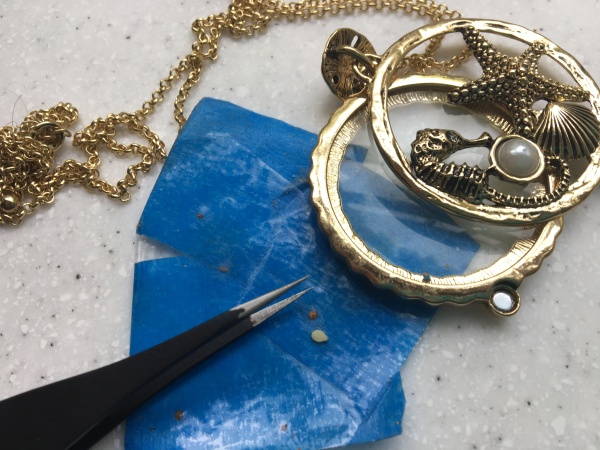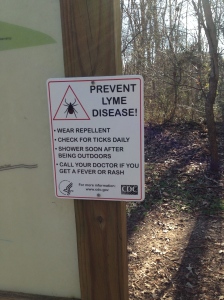
My friend Mickey gave me this magnifying glass cleverly disguised as a necklace. Note the thin tweezers for grasping the tick close to the skin, and the sesame seed next to the largish-sized nymphal tick.
LifeLoveLyme
Last week, I had just pulled out of my brother’s driveway in the gorgeous countryside on the outskirts of Middleburg, Virginia, when I felt an itch on my ankle. I looked down and saw a teensy tick clinging on by its mouthparts. Wrenching the steering wheel, I pulled over in a blind panic. Using my fingernails as tweezers, I grabbed it as close to the skin as I could and got it off.
Chanting “Be calm, be calm,” I got out of my car and scanned the parts of my body I could see. There on the back of one leg was a larger tick. I struggled with that one but got it off, too.
Making a U-turn like I was in a movie getaway scene, I tore up John’s driveway, jumped from the car and ran into his house. I shouted out what I’d found as I headed for the bathroom, stripping off my clothes as I went. Continue reading




